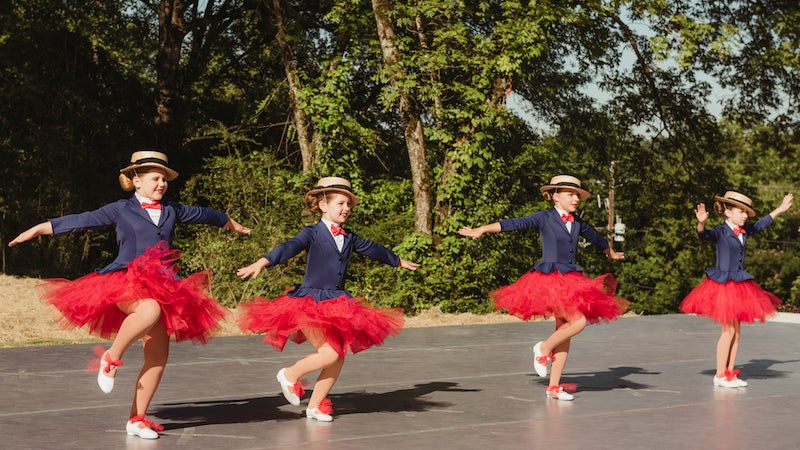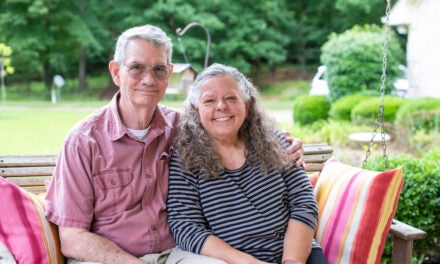By Alexandra Ditoro
As Alabama began to close schools on March 13, much of the state was concerned about how training for the college and high school football seasons would continue. But they weren’t the only ones. Here in Shelby County the dance community was concerned about their training during the COVID-19 quarantine, too.
With dance studio doors closed and in-person training suspended, coaches and teachers had to get creative with ways to keep their kids moving. And even once these closures began to end, in-person classes had to put proper safety measures in place to protect students and teachers.
At schools, dance team tryouts got postponed to the summer, but training went on. Thompson High School’s dance coach Zandra Morris began posting dance skills and workout plans to help THS dancers interested in auditioning, and divided these sessions into a five-day practice program posted to Google Classroom.
Through it all, Zandra’s hope was that her dancers would come back even stronger than they were before. But she also acknowledged that some dancers learn better with other people around, and others learn better alone, so she is interested to see how her team uses what they learned to help them train better when they are back all together as a team.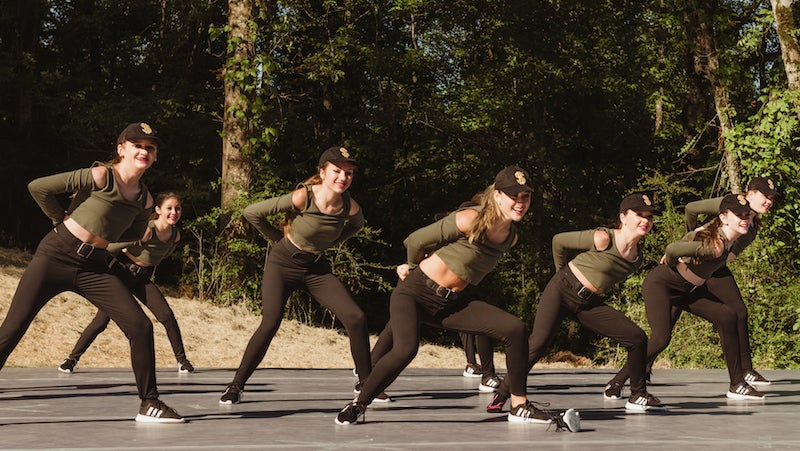
That will start with auditions this summer—with social distancing of course. Typically participants would learn material in-person a week leading up to the audition. Instead this year, dancers will use materials posted online a week before audition to prepare, and coaches will only see students dance on the day of the actual audition, with measures in place to ensure that dancers are in small groups and maintain social distance.
Before these new, socially-distant dance auditions occur, dancers need to train. That’s where local dance studios come into play with training online.
At the start of quarantine, Jennifer Hoff Friedman, owner of Dance Et Cetera in Helena, reached out to parents to tell them about the virtual dance content and that they would not be charged tuition for the months of April and May, since she wanted to relieve as much financial hardship as she could during this time. Soon their dancers could start using videos of recital choreography so that dancers could continue to practice technique daily. They could also access a virtual library of more than 40 dance classes.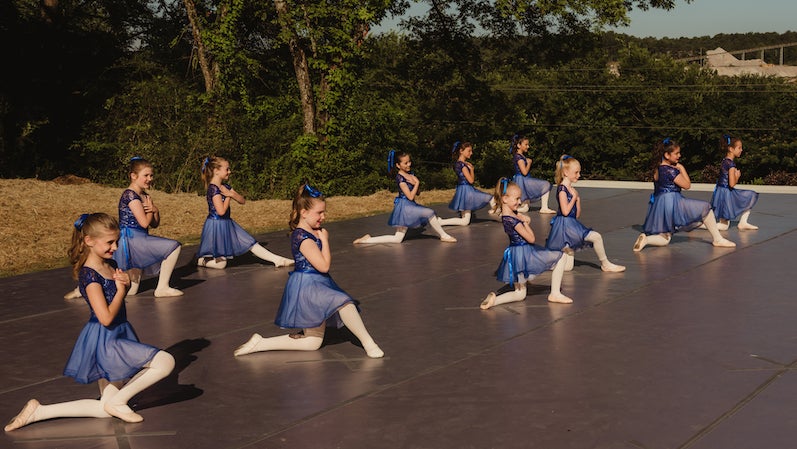
“We created our virtual training program because we couldn’t leave our dancers without the things they love, just because we couldn’t meet in person,” Jennifer says. “This pandemic reminded us that a big part of our responsibility to our dancers is to always be prepared for creative problem solving!”
To problem solve themselves, Dance Et Cetera also offered a curbside costume pickup and an outdoor, social-distance-friendly registration for classes in the fall throughout the safer-at-home order. And safely bringing students together for a recital meant building an outdoor stage for her students after the school year ended. “Our dancers work extremely hard all year long, and it broke our hearts to consider not having recitals for them,” she says. “We tackled this challenge head on with the construction of our outdoor amphitheater and have encountered nothing but positive responses for it!”
Over at Southern Dance Arts in Alabaster, owner Janis Sherwood also began to offer online training, first, through private YouTube videos and a private Facebook page, and then by offering classes through Zoom several days a week. However, the quick turnaround was difficult, and she said it took several weeks for her to develop an effective program to continue classes virtually.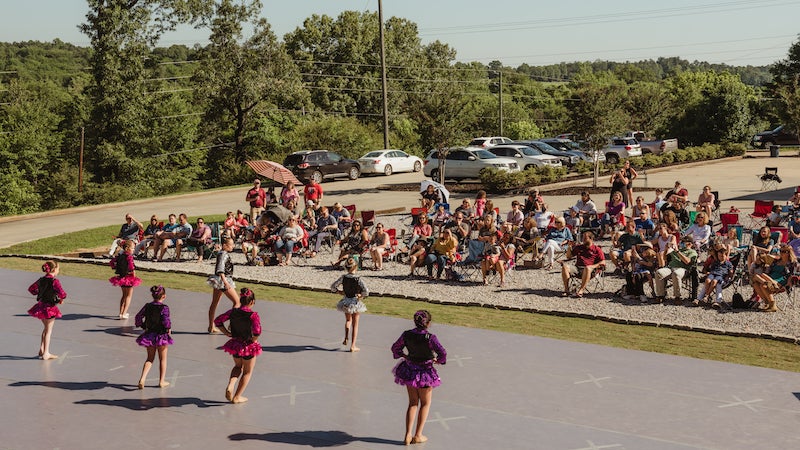
For a while, Janis had had an idea to restructure her program, and the pandemic helped push her to do so. By May she had new programs in place, such as a smaller number of dancers in teams sorted by age groups as well as master class opportunities, and a Talent search program called the Aspiring Artist Talent Competition, for when the studio reopens in the summer.
But reopening certainly didn’t mean business as usual. Instead, there strict rules and limitations on student drop-off and pick-up, cleaning procedures, what will be allowed in the studio, as well as allowing ample time between classes to properly execute these practices. There won’t be any partnering in choreography, where students are in physical contact with each other, which takes out a lot of creative elements of choreography, but Janis is focused on putting the safety of students and faculty first.
After all, she knows this world is bigger than the one she lives in in many ways. “I’ve been in contact with teachers and studio owners from all over the world, and we have shared so many of the same struggles and frustration,” she says. “So many have had to shut their doors completely. Teachers and studio owners have reached out to help one another to survive this crisis. It’s been refreshing to see.”
While dance studios and teams will continue to have to adapt, one thing is for sure— “The dance world will forever be changed by this,” Janis says. That and they will always find a way to keep dancing.
Dancer Profile: Chailyn Riley
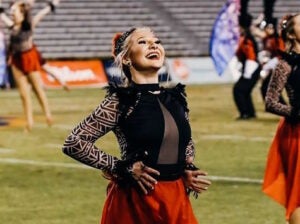 Chailyn was a Thompson High School Warriorette this past season during her freshman year of high school and is planning to audition for the upcoming season. When she learned that she would be training online, she understood, but was concerned and disappointed. Here’s how she continued to train:
Chailyn was a Thompson High School Warriorette this past season during her freshman year of high school and is planning to audition for the upcoming season. When she learned that she would be training online, she understood, but was concerned and disappointed. Here’s how she continued to train:
Online Training
“My dance team coach has posted optional things to do every day on Google Classroom. Everyday has a 10-minute stretch, and (my coach) switches up whether we work on core, arms, or legs for a little bit of a daily workout. She also switches the skill we are working on daily like jumps, turns, kick line technique, etc. I have learned some combos through Instagram lives and YouTube videos.”
Challenges
“I strongly dislike having to train at home! I miss my team so much. Practicing together is such a big part of what bonds us together so well. I think quarantine has set back my life as a dancer quite a bit. Tryouts are different this year, and we will not be able to attend a big UDA camp, which is such a fun part of summer as a member of a school dance team.”

